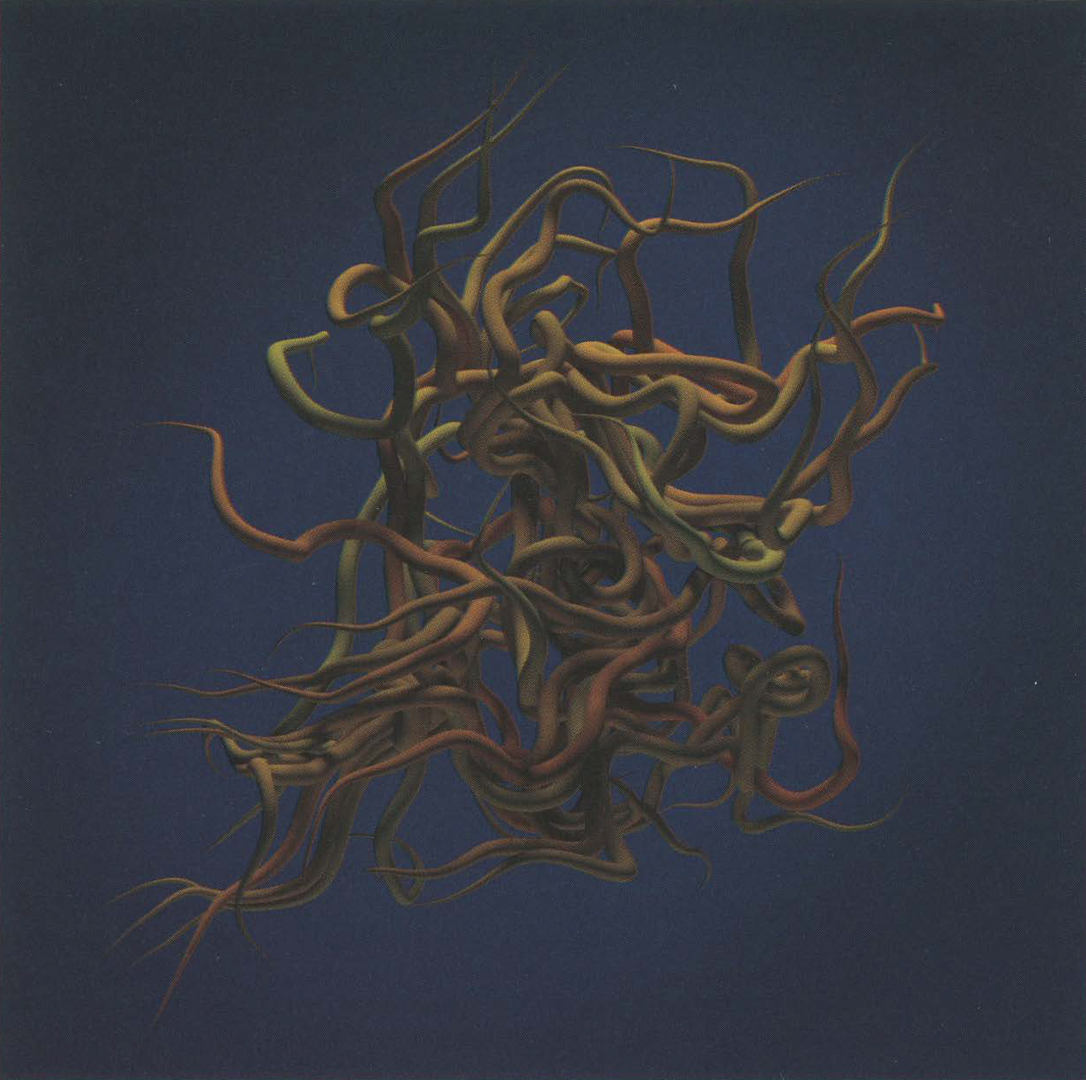Mark Stock: Green Streamlines
Artist(s):
Title:
- Green Streamlines
Exhibition:
Creation Year:
- 2007
Medium:
- Lightjet digital print
Size:
- 30 inches x 30 inches x 1 inch
Category:
Artist Statement:
Green Streamlines depicts flow paths through fluid turbulence. All of us spend our entire lives swimming in oceans of air or water and surrounded at every moment by these invisible, rapidly fluttering paths. They allow hummingbirds to fly, they churn the clouds, and they shape the ocean currents, yet their beauty sadly remains hidden from view. One theme prevalent in Green Streamlines and much of my visual work is the reduction of complex physical phenomena into their constituent parts and the subsequent exploration of those parts. In scientists’ language, I eliminate terms in the equations and search for beauty in those limited spaces. This is especially easy with computers, because a simulation that included all of the known terms or phenomena would be computationally intractable. Nature, however, blends them together effortlessly, to be disentangled by clever experimentalists. As a simulationist,
I have the easy job.
Technical Information:
Digital Technology was integral to every aspect of production of both Dynamo and Green Streamlines. Once the conceptual design was complete, a collection of random vortex particles
(representing small parcels of fluid with roughly constant rotation) was created to fill the space. Custom software processed the locations and strengths of these vortex particles. The proper environment and lighting were then designed, and the entire scene was passed to the rendering software. The full-size image was created with Radiance, one of the few scientifically validated lighting simulators.
Radiance uses a hybrid radiosity algorithm to closely approximate the actual physical light transport and interreflection throughout the complex scene. Radiance numerically followed tens of billions of light rays in order to create this image. The resulting high-dynamic-range image was print-optimized and exported to a Lightjet printer, which exposes photographic paper with laser light at a resolution of several thousand pixels per inch.





